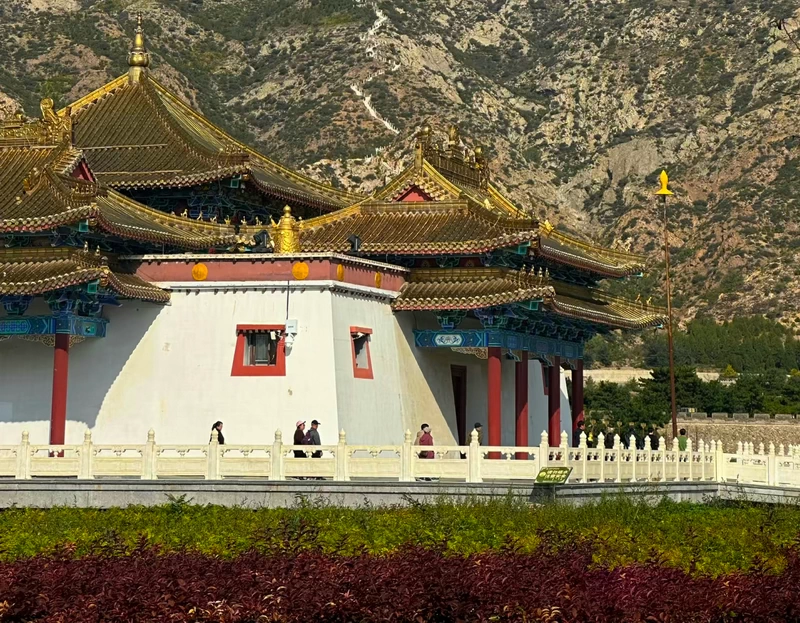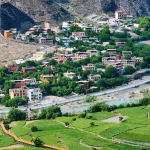Nestled between Baotou and Hohhot in Inner Mongolia, Meidaizhao Monastery (美岱召) is a serene destination rich in history, culture, and Tibetan Buddhist heritage. Once a fortified capital built by the legendary Altan Khan (俺答汗), it later became a spiritual center surrounded by mountains and murals.
This travel guide will help you explore Meidaizhao’s unique story, plan your visit, and discover why it’s one of Inner Mongolia’s hidden gems.
Where Is Meidaizhao Monastery?
If you’re planning a trip through Inner Mongolia, consider a detour to Meidaizhao Monastery. It sits quietly in Meidaizhao Village, nestled beneath the dramatic slopes of Daqing Mountain in the Yinshan Range. The location belongs to Tumed Right Banner (土默特右旗), part of Baotou’s Donghe District.
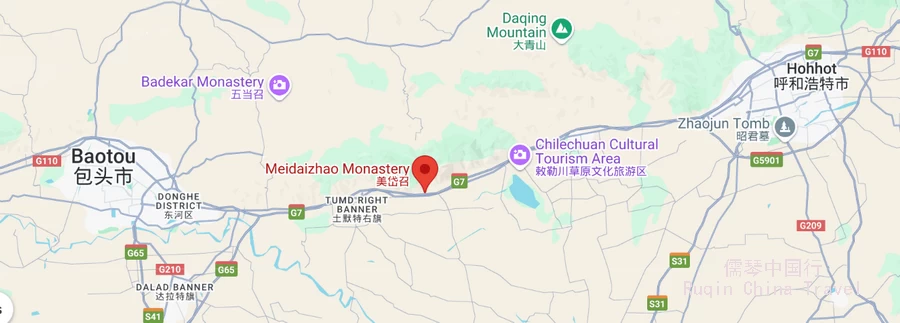
Conveniently, Meidaizhao Monastery lies nearly halfway between Baotou (98 km) and Hohhot (99 km). It’s located just north of Jingzang Expressway No. 6 (G6), also known as National Highway 110, making it an easy stop if you’re road-tripping through this scenic region.
📍 Address: Meidaizhao Village, Meidaizhao Town, Tumed Right Banner, Baotou City, Inner Mongolia
📞 Tel: 0472-8850012
How to Get There and Ticket Info
Reaching Meidaizhao Temple is surprisingly simple. First, you can catch a train from either Hohhot or Baotou to Salaqi Railway Station (萨拉齐站). This modest station, built in 1922, lies about 22 kilometers from the monastery.
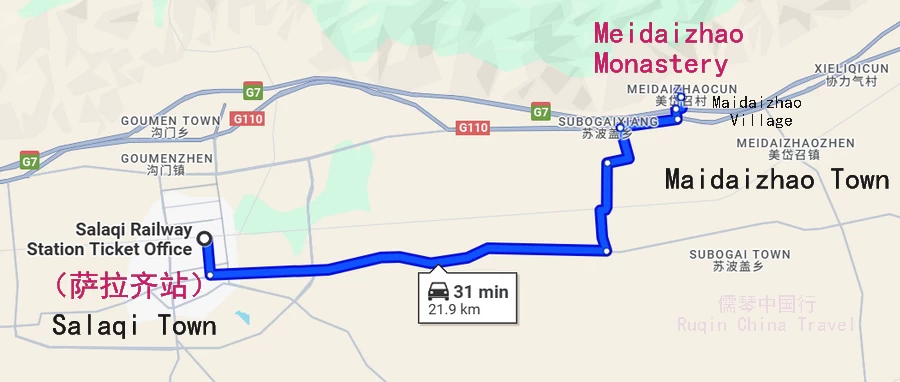
Next, once you exit the station, walk west to the nearby overpass. There, you can hop on Minibus No. 6 (only 5 yuan) heading directly to Meidaizhao Village. Look out for a decorative memorial arch — once you pass it, the temple is just a few minutes ahead on foot.
Alternatively, long-distance buses from both cities also serve the area.
🎟️ Entrance Fee: 30 yuan per person
🕘 Hours: 9:00 AM – 5:00 PM (last ticket sold by 4:00 PM)
With its convenient access and low entry fee, Meidaizhao makes for a peaceful and affordable cultural excursion.
A Bit of History
The name “Meidaizhao” translates to “Maitreya Temple” in Mongolian. But it wasn’t always a monastery. Originally built in 1565, it started out as the fortified capital of the Daming Golden Kingdom (大明金国“都城”), a vassal state under the Ming Dynasty, led by the famous Altan Khan.
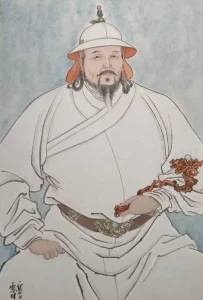
Altan Khan, a descendant of Kublai Khan, played a key role in reuniting the northern and southern Mongols. In 1571, he received the title Shunyi Wang (Obedient Prince) 顺义王 from the Ming emperor, cementing a lasting peace.
Together with his wife, known as Sannianzi (Grand Queen)三娘子, Altan Khan ruled peacefully for decades. Later, in 1606, the military fortress was transformed into a Tibetan Buddhist lamasery, marking the start of Meidaizhao’s religious significance.
Interestingly, Altan Khan also helped establish Hohhot, which means “Green City” in Mongolian. So if you’re visiting Hohhot, you’re also stepping into his legacy.
Temple Layout and Key Highlights
Today, Meidaizhao Temple spans 4,000 square meters and houses over 200 structures from the Ming and Qing dynasties. A tall, 5-meter-high stone wall surrounds the temple in a rectangular shape. Walking its 681-meter perimeter gives you a true sense of the site’s former grandeur.
Inside, the main attraction is the Sakyamuni Hall, also known as the Hall of Great Hero. It features stunning murals from the Ming and Qing periods, especially a massive 1650-square-meter painting that covers the walls and ceiling. Don’t forget to look up!
Other important halls include the Glazed Hall, Dalai Temple, Nai Qiong Temple, and the Grand Queen Hall, each with its own historical and spiritual story. As you walk through these buildings, you’ll notice a rich mix of Han and Tibetan architecture—a rare sight in most Chinese temples.
Step Inside: A Virtual Stroll
Let’s take a quick mental walk through Meidaizhao Monastery. First, you’ll pass through the south gate, with Daqing Mountain rising behind the temple. As you approach the temple courtyard, look for two ancient pine trees, known as the “Listening to Buddhist Scriptures” trees. These are said to be over 400 years old—one male, one female.
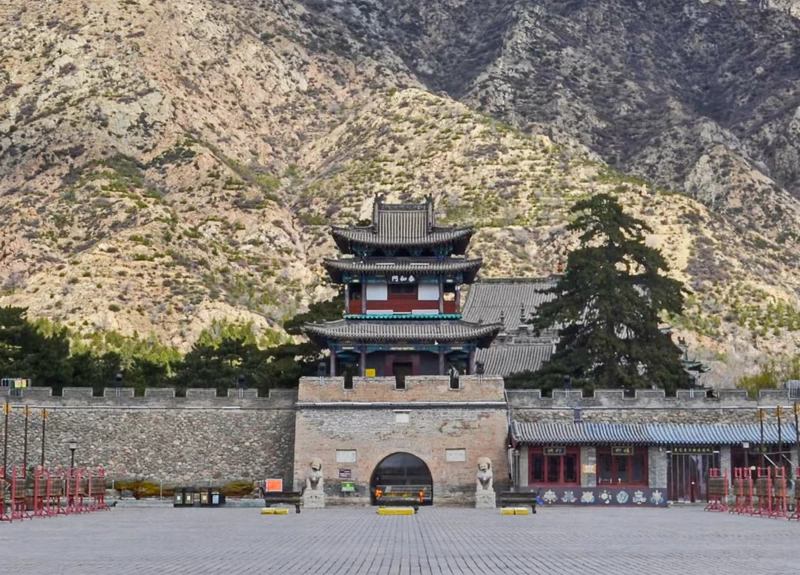
Inside, the Sakyamuni Hall 大雄宝殿 impresses visitors with its three-tiered structure and grand murals. Painted scenes show Mongolian nobles worshipping Buddha, offering a glimpse into 16th-century culture.
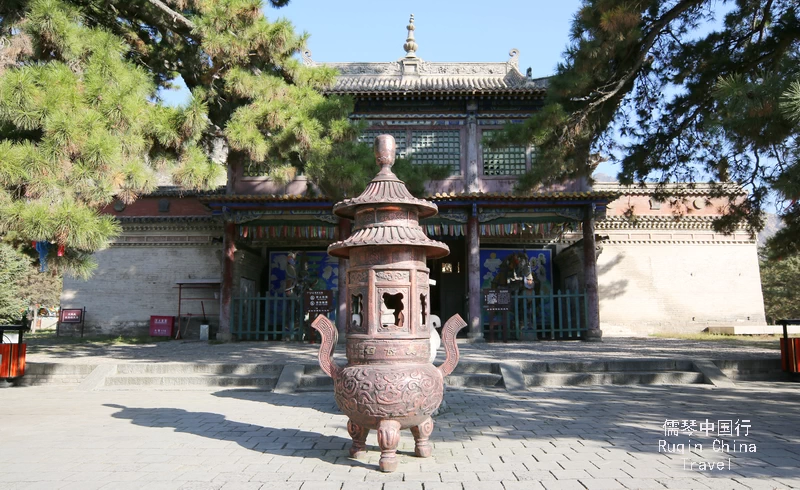
In the Nai Qiong Hall (乃琼殿), you’ll find the Guardian of God, replacing the original statue of Mal Da Li, a living Buddha in the Qing Dynasty.
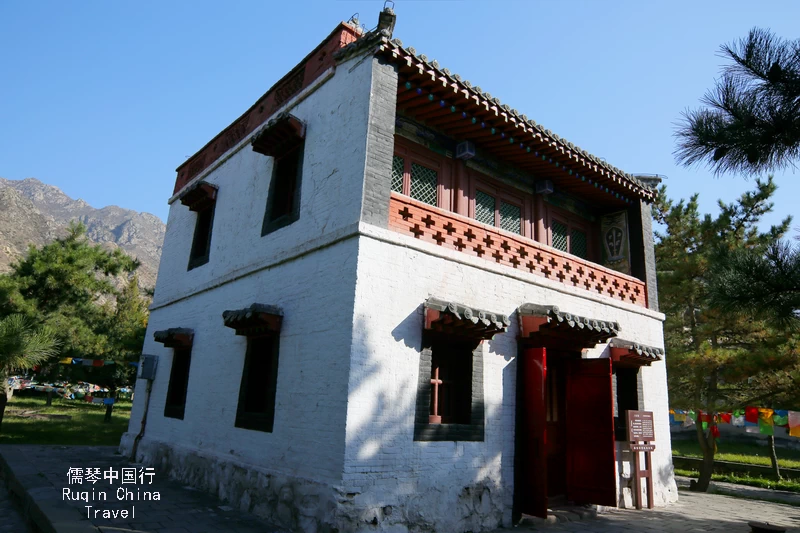
The Glazed Hall (琉璃殿), built in 1566, once hosted political meetings for Altan Khan. Now, it enshrines the Three Buddhas, standing as a beautiful example of Ming architecture.
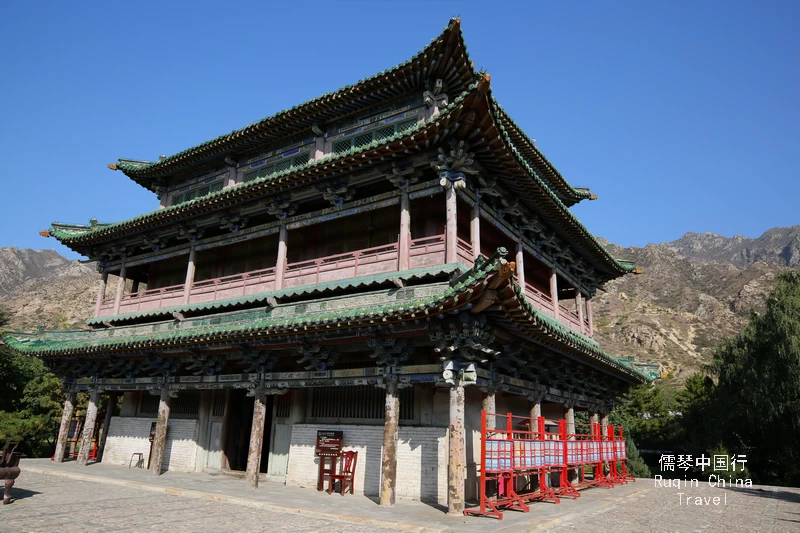
Each hall holds stories and relics that reflect centuries of Mongolian heritage.
Dalai Temple and the Dalai Lama’s Legacy
The Dalai Temple 达赖庙 stands as a tribute to the Third Dalai Lama 达赖三世, Sonam Gyatso, who visited in 1582. He conducted Buddhist ceremonies here and even oversaw Altan Khan’s funeral.

This visit was pivotal. It marked a strong connection between Mongolian rulers and Tibetan Buddhism. Interestingly, it was Altan Khan himself who first gave the title “Dalai Lama” to Sonam Gyatso—a title that continues to this day.
As you explore the Dalai Temple, you’ll feel the weight of its history. This was not just a religious site but also a place where political and spiritual powers met.
Grand Queen Hall: A Woman Behind the Throne
One of the most touching parts of the monastery is the Grand Queen Hall 太后庙. This hall honors Sannianzi, Altan Khan’s third wife, who helped him rule and keep peace with the Ming for over 40 years.
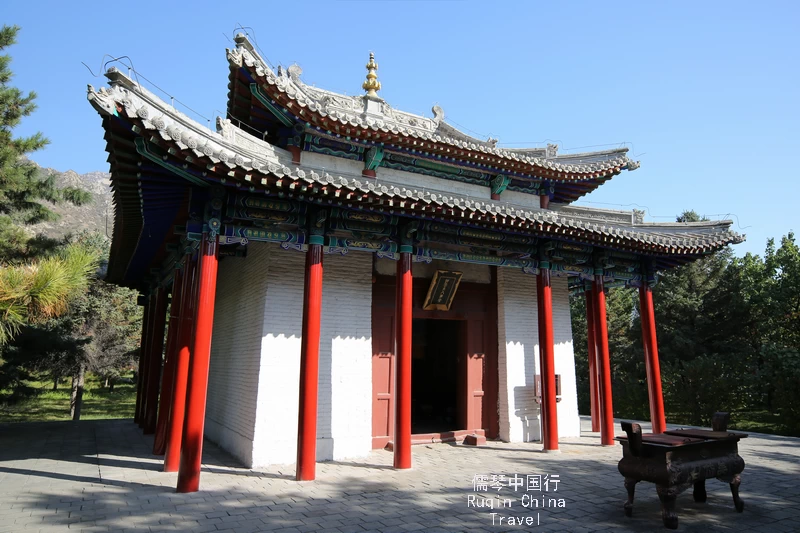
The original funeral tower, made of sandalwood and covered by a bronze pot, stood until 1966. Beneath it, archaeologists discovered an underground chamber filled with personal relics—ashes, combs, rosaries, and jewelry.
Murals inside the hall still depict Sannianzi and Altan Khan, dressed in traditional Mongolian robes. These images give us a rare, personal look into their lives, far beyond royal titles.
A Fortified City in the Mountains
Finally, don’t miss the chance to walk along the ancient stone walls 古城. From here, you can enjoy panoramic views of the Daqing Mountain and the temple’s layout. The turrets, once used for defense, now provide a quiet spot for reflection and photography.
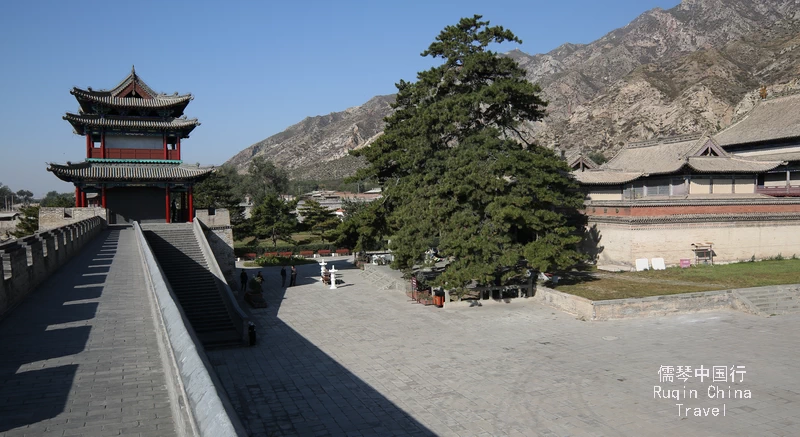
The entire site was once a fortified city, shaped like an irregular square. It faced south and stood proudly beneath the mountains, just like a guardian of the steppe.
From this vantage point, you’ll truly appreciate Meidaizhao not just as a temple—but as a living story of Mongolia’s past.
Meidaizhao Monastery may not appear on every traveler’s radar—but that’s exactly what makes it so special. Here, you’ll find centuries-old murals, peaceful courtyards, and echoes of Mongolia’s past, all set against the rugged beauty of Daqing Mountain. It’s a place where history lives quietly, waiting for curious visitors to slow down and explore.
Whether you’re in Hohhot, Baotou, or just passing through, Meidaizhao offers a meaningful escape from the usual tourist trail. Come for the history, stay for the atmosphere, and leave with a deeper connection to Inner Mongolia’s rich cultural tapestry.

